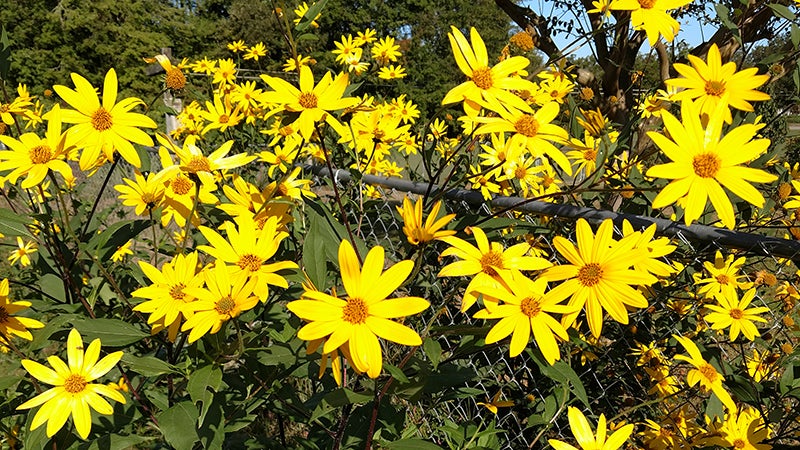Sun-sational Sunchokes offer edible tubers
Published 7:08 pm Friday, October 16, 2020

- Sunchokes are really easy to grow, some would say they are invasive and that when you grown them once you will always be growing them.
|
Getting your Trinity Audio player ready...
|
By Mark C. Carroll
Master Gardener
Late September and early October really come alive with Jerusalem Artichokes, also called Sunchokes. A native plant of North America, Helianthus tuberosus or Sunchoke, is surprisingly not from Jerusalem and it is not even an artichoke. This is a great example of why master gardeners like the Latin names for plants. Sunchokes are a member of the sunflower family “Helianthus,” they create tubers below the surface of the ground hence the name “tuberosus.” I plant many of these but they have some particularities, that may or may not make them a good choice for your property.
- They can grow large, most of mine are 3-4 feet tall; however, I have some that extend a good 8-12 feet. Since they can be tall, the wind many times makes them fall, but they will still flower.
- They are really easy to grow, some would say they are invasive and that when you grown them once you will always be growing them. Unless you can remove all the tubers every year, and in clay soils or mixed in with your other garden vegetables, you will be very unlikely to control the growth of these master propagators.
- The tubers are edible, there are many recipes and it seems they are becoming more popular in restaurants. Generally harvested after the first hard frost, they provide a rich, nutty, sweet flavor. Very commonly cooked like potatoes. They are a good source of carbohydrates for diabetics because they are completely starchless and do not spike insulin levels like other foods. You will want to wash them well; they are knobby and tend to trap soil. As a word of warning, they are colloquially referred to as “fart-a-chokes,” because they tend to product some excess gas as part of the digestion process. Probably one should start small and increase their intake gradually.
- Like fruits, sunchokes store sugars like levulose, and they contain one tenth the calories of white potatoes.
- They bloom when many flowers plants have already gone to seed, they are bright and vibrant for a month or two.
On another note, we’re back! The Western Tidewater Master Gardeners will be back at the Farmer’s Market today, Oct. 17. We will have to maintain 6 feet from visitors and wear our masks, but we are going to try to be helpful and see how it goes. So please stop by and we will help to answer your questions which is one of our primary callings as Master Gardeners.




